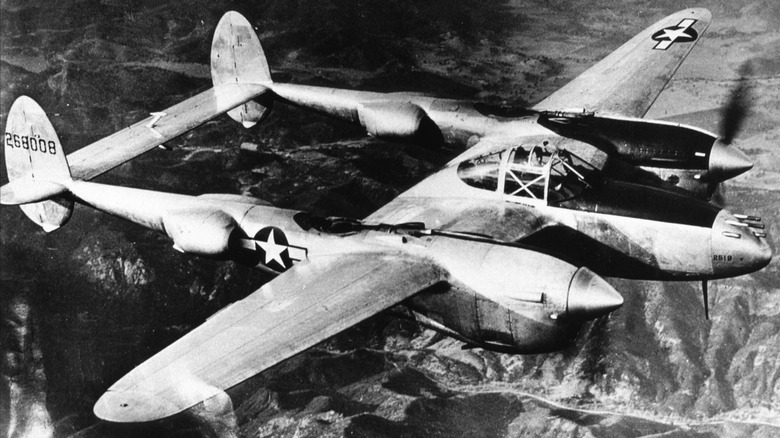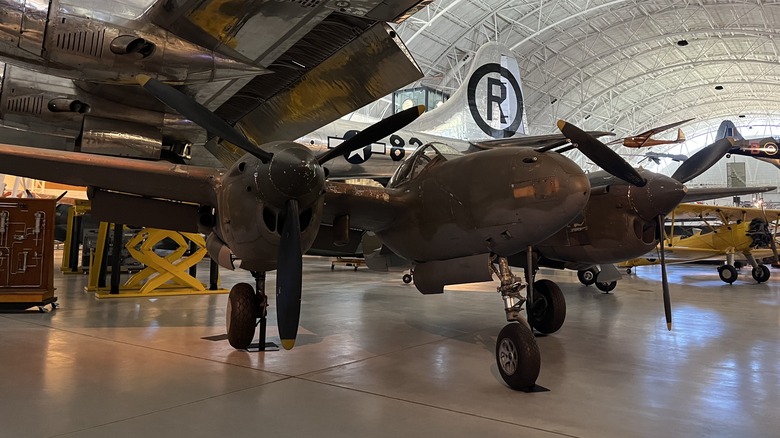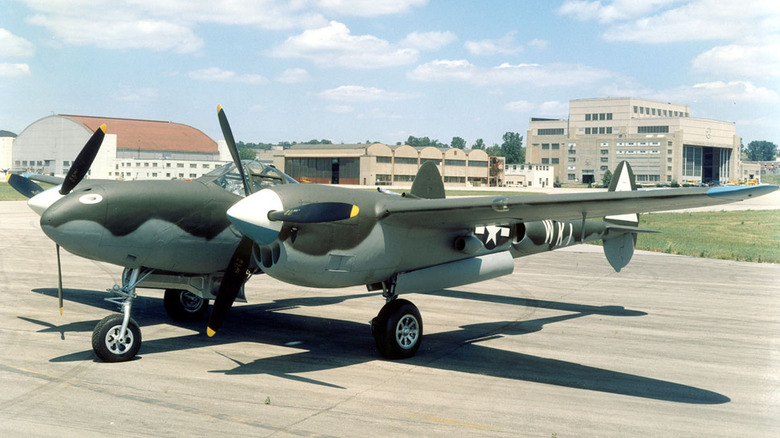The Lockheed P-38 Lightning Looked Bizarre But Its WWII Fighter Plane Record Was Astounding
In the time between World War I and World War II, fighter planes underwent rapid changes. During the first World War, the Sopwith F.1 Camel was known as one of the best combat planes around. It had a wooden airframe with a fabric skin and could reach speeds of 112 miles per hour with its 130 horsepower engine. Fast-forward to the beginning of World War II and planes like the P-40 Warhawk were in common use. It was an all-metal monoplane that could reach 362 miles per hour and possessed a 1,150 horsepower engine. It was quite a far cry from what Snoopy was flying when he fought the Red Baron.
Eventually, planes like the P-51 Mustang showed up on the scene to outfly everything with wings that the Axis could throw at it. In the European theater, the Mustang was unmatched in nearly every capacity by both enemy aircraft and Allied planes. But in the Pacific Theater and the campaign in North Africa, one plane is responsible for more air victories than everything else, the Lockheed P-38 Lightning, also known as "The Forked-Tail Devil."
The forked-tail devil
The Lightning first flew in 1939 and broke records nearly immediately with a 7-hour, 48-minute flight across the United States. It was first used in combat in 1942 fighting Nazi Field Marshal Erwin Rommel's troops in the campaign in North Africa. It was there that the P-38 gained its nickname. According to Lockheed Martin, a terrified German pilot who just lost his plane to the guns of the Lightning couldn't get the sight of the bizarrely shaped airplane out of his mind, calling it "der Gableschwanz Teufl" or, "The Forked-Tail Devil."
That's actually an apt description of the Lightning's airframe. Instead of one singular tail, the Lightning had two and a long wing going between them. It also had two engines on either side of the cockpit resulting in a less-than-conventional appearance. Despite how it may look, the Lightning wasn't a weird slow experimental fighter. The twin engines made it incredibly fast with a top speed of 414 miles per hour and its strange airframe made it an incredible performer wherever it was needed. Planes like the Mustang and Spitfire get a lot of the spotlight for being the best fighter planes around, but the Lightning could do it all like ground support (like the modern-day A-10 Warthog), photoreconnaissance, and high-profile hunting missions.
Instrumental in the Pacific
In the fight against Imperial Japan, the P-38 proved itself time and time again and has been credited with scoring a huge morale victory when 1943. P-38s are credited with shooting down the plane carrying Imperial Japanese Navy Admiral Isoroku Yamamoto, killing him. Yamamoto was the man who planned the surprise attack on Pearl Harbor.
Pilots adored the plane. It would "fly like hell, fight like a wasp upstairs, and land like a butterfly, according to Colonel Ben Kelsey, one of the Lightning's test pilots. According to the National Museum of the Air Force, the P-38 Lightning was the faithful steed of seven out of the top eight ace pilots. Major Richard Bong was awarded a Medal of Honor for his deeds behind the flight stick of a P-38. He is credited with 40 air-to-air kills of Imperial Japanese planes during the war, the most of any known fighter pilot in U.S. military history.


